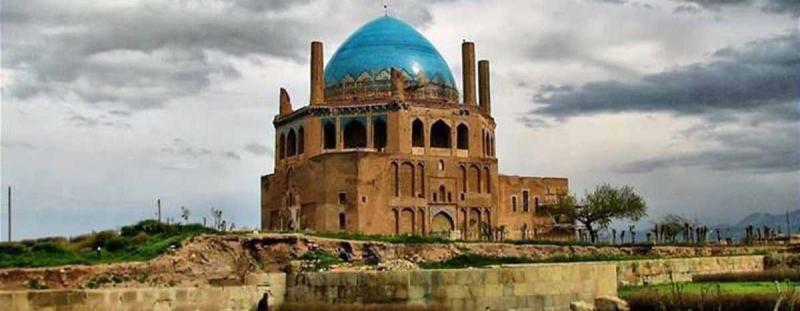
As in previous years, the UNESCO-tagged Gonbad-e Soltaniyeh, sometimes referred to as Iran’s ‘Taj Mahal’, celebrated the International Day for Monuments and Sites, but this time, in an online program aimed to help stop transmission of the coronavirus, which is currently challenging the whole world.
The online ceremony was held on Friday, which is a national holiday in the country, a day prior to the original date, which is April 18.
“Every year, the World Heritage site celebrates the International Day for Monuments and Sites holding special programs in accordance with a theme that the ICOMOS [the International Council on Monuments and Sites] selects each year. However, this year the event is scheduled online to prevent the transmission of the coronavirus,” CHTN quoted Amir Arjmand, the tourism director of Zanjan province, as saying on Thursday.
‘Shared Cultures, Shared Heritage, Shared Responsibility’ is the theme of the event this year.
Given the current global outbreak of COVID-19 and the containment measures in different countries around the world, the ICOMOS has encouraged people to celebrate the Day in compliance with instructions from local and national authorities so as to ensure the safety of participants.
“The ceremony includes a report on maintenance projects and restoration workshops, which have recently been carried out in Soltaniyeh complex,” the official said.
Reminding the significance of cultural heritage and its maintenance, he added: “Historical relics and sites and their impact on showing the background and history of a nation have always been very important, and preserving them is a huge task.”
Dominating the skyline, the 14th-century Gonbad-e (“The Dome of”) Soltaniyeh is highly recognized as an architectural masterpiece particularly due to its innovative double-shelled dome and elaborate interior decoration. The monument is, in fact, the mausoleum of Oljaitu, also known as Muhammad Khodabandeh, who was the eighth Ilkhanid dynasty ruler from 1304 to 1316.
According to UNESCO, the mausoleum’s interior decoration is so outstanding that scholars like A.U. Pope have described the building as “anticipating the Taj Mahal”.
The UN cultural body has it that the Mausoleum of Oljaytu is an essential link and key monument in the development of Islamic architecture in central and western Asia. The fairly large dome is the earliest extant example of its type in the country and became an important reference for the later development of the Islamic dome.
Source: Tehran Times

Add new comment